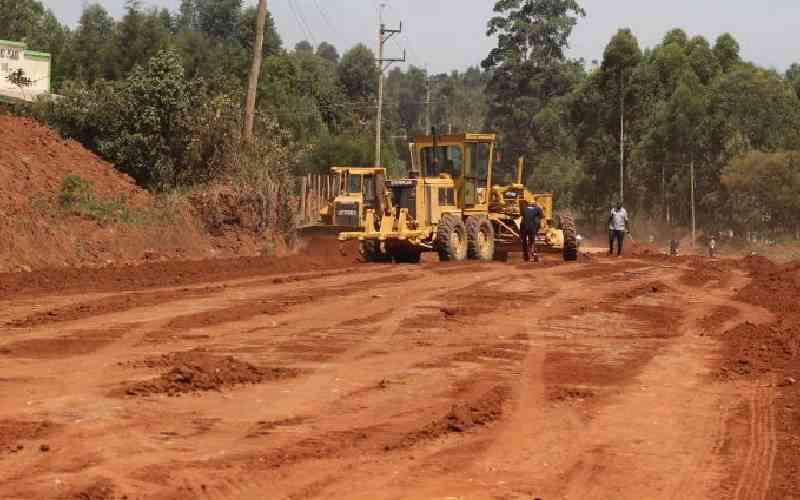Every dollar spent on infrastructure generates 5 to 25 per cent in economic returns each year, according to a report launched in Nairobi last week.
The report, done by auditing firm PricewaterhouseCoopers (PwC), however, found that sub-Saharan Africa is lagging behind in unlocking this potential growth because of a lack of financing.
This challenge was particularly acute in East Africa, where 73 per cent?of respondents cited access to the right type of funding as their?biggest challenge.
Kenya is in the process of implementing an extensive infrastructure investment plan and is expected to spend about $60.4 billion (Sh5.5 trillion) on transportation, utilities, telecommunications and social sectors between 2012 and 2020.
Weak planning
The report, titled Trends, Challenges and Future Outlook: Capital Projects and Infrastructure in East, Southern and?West Africa, noted that securing adequate funding was hindered by weak?infrastructure planning at the country level, limited capacity to?identify technically feasible and economically viable projects, and?uncertain regulatory environments.
“One of the oft-cited challenges in sub-Saharan Africa is the issue of?funding, but it is not so much that there isn’t funding, it is about trying to package projects to make them viable and feasible,” said Jonathan Cawood, the capital projects and infrastructural leader for PwC Africa.
The report recommends the use of private-sector financing to make up for limitations in Government spending.
“Financing infrastructure in East Africa will remain a?challenge that can only be met by the discussion of the private sector?through various forms of public-private partnership (PPP),” said Tibor Almassy, PwC Kenya’s capital projects and infrastructure deals leader. “It will also require the?adaptation of the traditional PPP model to meet local realities, and?the inclusion of local financing institutions in this process.”
Three procurement models were highlighted in the report, which surveyed 95 key infrastructure players, including development finance?institutions, Government organisations and private sector?companies across three sub-regions.
The first one?was traditional procurement, where the current owner continues to?own, finance and operate assets.
The second model was PPPs, where external?parties participate in funding, building and operating projects.
The third was disposal/privatisation, where the owner disposes of assets to an external party who assumes responsibility for their?operation and funding.
OTHER CHALLENGES
Southern Africa’s most preferred model for?delivering capital projects is traditional procurement, with about 59 per cent?of respondents in the region favouring it.
Stay informed. Subscribe to our newsletter
It was also preferred by most respondents in East Africa. However, the difference between those who preferred it and those who went for PPPs was marginal.
PPPs were most preferred in Western Africa, with 51 per cent of respondents vouching for it.?
Generally, PPPs were popular across all three sub-regions, with the?report noting Kenya is at the forefront of making advances in?PPP financing and infrastructure projects.
Very few respondents preferred the disposal/privatisation model.
Other challenges that beset the delivery of capital projects in sub-Saharan Africa were?the policy and regulatory environment, political risk/government?interference and lack of capacity in the market.
The report also found that while all projects are susceptible to going off track and experiencing costly delays, some are more vulnerable.
These include those involving new technologies, dependent on regulatory and environmental approvals, reliant on substantial funding and those in politically unstable regions or requiring complex stakeholder management.
Nearly half (47 per cent) of survey respondents said they experienced delays of more than six months on capital projects.
Those in East Africa suffered the most delays of more than six months.
Further, according to the survey, 36 per cent of respondents indicated that their projects had run over budget by between 10 per cent and 50 per cent.
Lack of capacity
In East Africa, survey respondents cited the lack of internal and skilled capacity as the main causes of cost variances.
“The most prominent risk faced in the development of infrastructure in East Africa is completion on time and within budget,” said Kuria Muchiru, PwC Kenya’s capital projects and infrastructure consulting leader.
“Beyond financial close and the challenges of the funding gap, the delivery of projects requires new and robust cost control and project assurance management methods.”
The survey, however, noted that the respondents were mainly “optimistic,?committed and confident” of achieving their objectives and overcoming?the “short to medium-term obstacles”.
“East Africa is a region of diversity and great opportunity. The?development of its infrastructure through well-planned and co-ordinated?public and private partnerships will improve lives by providing access to economic opportunities,” said Mr Cawood.
“Despite the hard work that lies ahead, from our interactions with?stakeholders during this survey, [their] ... willingness to consider alternative approaches and solutions is?encouraging.”
The report added that external technical assistance and private capital would be critical to exploiting the inherent value in infrastructure, but should be combined with local context for “the?right blend of global and local solutions”.
[email protected]
 The Standard Group Plc is a
multi-media organization with investments in media platforms spanning newspaper
print operations, television, radio broadcasting, digital and online services. The
Standard Group is recognized as a leading multi-media house in Kenya with a key
influence in matters of national and international interest.
The Standard Group Plc is a
multi-media organization with investments in media platforms spanning newspaper
print operations, television, radio broadcasting, digital and online services. The
Standard Group is recognized as a leading multi-media house in Kenya with a key
influence in matters of national and international interest.
 The Standard Group Plc is a
multi-media organization with investments in media platforms spanning newspaper
print operations, television, radio broadcasting, digital and online services. The
Standard Group is recognized as a leading multi-media house in Kenya with a key
influence in matters of national and international interest.
The Standard Group Plc is a
multi-media organization with investments in media platforms spanning newspaper
print operations, television, radio broadcasting, digital and online services. The
Standard Group is recognized as a leading multi-media house in Kenya with a key
influence in matters of national and international interest.








